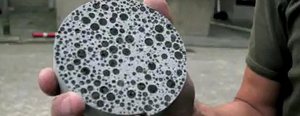 We were very excited to read the BBC coverage of ‘re-healable concrete’. This initiative infiltrates the concrete with a limestone producing bacteria, which are activated by corrosive rainwater working its way into the structure. Although it seems to have a similar concept to Crystalline Integral Waterproofing, it is still important to keep aware of all the progressive waterproofing options available besides a traditional surface-applied membrane.
We were very excited to read the BBC coverage of ‘re-healable concrete’. This initiative infiltrates the concrete with a limestone producing bacteria, which are activated by corrosive rainwater working its way into the structure. Although it seems to have a similar concept to Crystalline Integral Waterproofing, it is still important to keep aware of all the progressive waterproofing options available besides a traditional surface-applied membrane.
Kryton has been aware of this research and development of the ‘bacterial/organic’ approach for some time. It's a very interesting direction that is receiving a lot of coverage AND anytime awareness is created about the problems associated with cracked concrete and infrastructure prone to corrosion, we always feel inclined to jump in on the conversation!
That said, by their own account, they have a long way to go to prove that it will work consistently, that it will last and even to get it cost effective. Our Krystol technology has already proved itself over 30 years, it has already proven to seal cracks that are larger than the best results that the bacterial approach has been able to demonstrate. Our Krystols become a permanent part of the concrete and it's cost effective. In addition, KIM’s crack sealing properties has proven to work in many countries, temperatures and geographies around the globe and has delivered numerous other benefits as well as being environmentally friendly (sustainable).
Additionally when reviewing the organic/bacterial approach one must consider that testing is the proof of the pudding so to speak. Bacteria can break down/die and is susceptible to heat and cold and other chemical reactions - so the commercialization of this approach is still many years in the future. As a last thought, I think I’d like to keep my bacteria in my ‘posh French cheese’ and not have it propping up my buildings and bridges!






